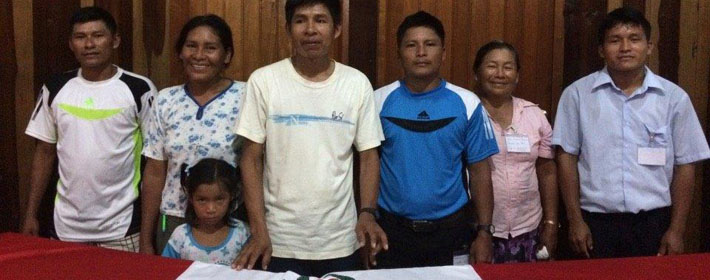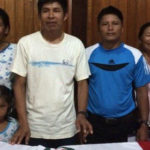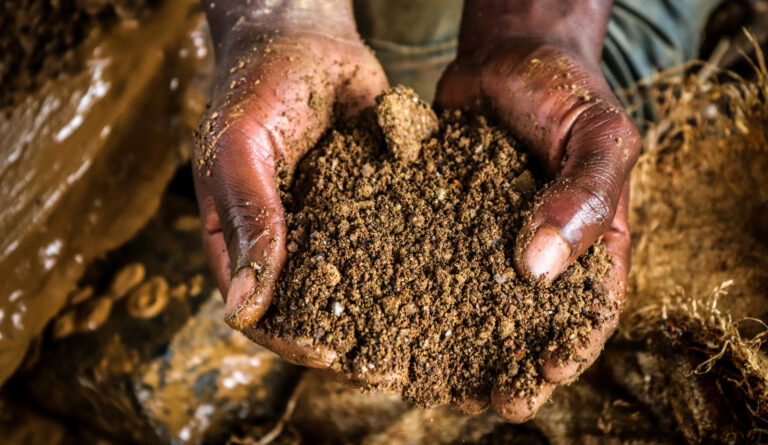In Peru, the exploitation of raw materials represents a fundamental issue for the national economy. But very often, these activities do not benefit the development of local populations. Inequalities are not decreasing and poverty is significant in regions where resources are massively exploited. In addition, this exploitation generates considerable socio-environmental conflicts, some of which take place in the Peruvian Amazon, in the department of Loreto, where the survival of indigenous communities is jeopardized by oil exploitation.
 The department of Loreto is the largest department in Peru. It is formed by seven provinces, including that of Maynas, which in turn includes 13 districts, notably that of Napo in reference to the river which crosses it. More than half of the population of this district is indigenous [1]Article 1 of ILO Convention 169 defines the term indigenous by referring to “populations who lived in the country or in a geographical region belonging to the country to… Continue reading, mainly “Kichwa”, and is called “Naporuna” for the close relationship that connects it to the river. The Napo River is the central element of community life. It allows them to feed, wash and move around. The history of the Amazonian population is fraught with suffering. In the 19th and 20th centuries, the natives were enslaved to exploit rubber for the benefit of Europeans. Today, oil confronts the population with new social and economic processes influenced by new actors: extractive companies. Several resources arouse the desire of businesses in the province of Maynas: wood, minerals, oil. Hydrocarbon extraction is predominant there. It is granted by the government, but very often without prior consultation [2]Convention 169 of the International Labor Organization (ILO) recognizes the right to prior consultation. This right implies that indigenous populations must be consulted… Continue reading Population. The operating conditions defined by the government do not guarantee the protection of local populations. The “Perenco” case in the province of Maynas is an eloquent example.
The department of Loreto is the largest department in Peru. It is formed by seven provinces, including that of Maynas, which in turn includes 13 districts, notably that of Napo in reference to the river which crosses it. More than half of the population of this district is indigenous [1]Article 1 of ILO Convention 169 defines the term indigenous by referring to “populations who lived in the country or in a geographical region belonging to the country to… Continue reading, mainly “Kichwa”, and is called “Naporuna” for the close relationship that connects it to the river. The Napo River is the central element of community life. It allows them to feed, wash and move around. The history of the Amazonian population is fraught with suffering. In the 19th and 20th centuries, the natives were enslaved to exploit rubber for the benefit of Europeans. Today, oil confronts the population with new social and economic processes influenced by new actors: extractive companies. Several resources arouse the desire of businesses in the province of Maynas: wood, minerals, oil. Hydrocarbon extraction is predominant there. It is granted by the government, but very often without prior consultation [2]Convention 169 of the International Labor Organization (ILO) recognizes the right to prior consultation. This right implies that indigenous populations must be consulted… Continue reading Population. The operating conditions defined by the government do not guarantee the protection of local populations. The “Perenco” case in the province of Maynas is an eloquent example.
Attachments
Notes[+]
| ↑1 | Article 1 of ILO Convention 169 defines the term indigenous by referring to “populations who lived in the country or in a geographical region belonging to the country at the time of conquest or colonization or even when the current state borders were established and which, whatever their legal situation, all retain their own social, economic, cultural and political institutions. |
|---|---|
| ↑2 | Convention 169 of the International Labor Organization (ILO) recognizes the right to prior consultation. This right implies that indigenous populations must be consulted freely, with anticipation and with the necessary information each time projects, laws or regulations affect them. |
| ↑3 | An oil lot is an oil concession over a given territory. The State can sell the right to an oil company to extract and/or exploit oil there over a defined number of years. |
| ↑4 | The company is also a shareholder at 55%, of lot 39, also present in the Napo district. This lot is a compromise between the Perenco companies and the Spanish company Repsol: http://www.bastamag.net/Perenco-etend-son-exploitation; http://larepublica.pe/30-03-2014/repsol-vende-acciones-de-proyecto-ubicado-en-zona-de-aislamiento-voluntario; http://multinationales.org/Perenco-etend-son-exploitation The company is also present in other Latin American countries, as well as in Africa: http://www.bastamag.net/Perenco-l-entreprise-petroliere |
| ↑5 | More than 200 people were injured, 83 were arrested, including 18 people put in prison. |
| ↑6 | The notion of voluntary isolation refers to the fact that the population has freely sought isolation in a specific region for its own reasons. |
| ↑7 | Since 2013, night transport has been prohibited. |
| ↑8 | IRENA, Box of herramientas for the management of conservation areas, Lima, Peru, 2008, p.14. |
| ↑9 | The future Maijuna-Kichwa protected natural area has an area of 399,280 hectares. |
| ↑10 | Primary needs are those linked to the survival of a human being: food (growth), respiration (oxygen), hydration (water), etc. |
| ↑11 | NACIONAL INSTITUTE OF ESTADISTICA AND INFORMATICA (INEI), |







